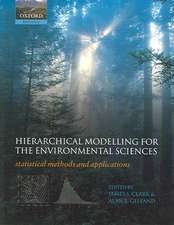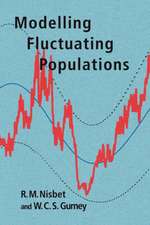Food from dry lands: An integrated approach to planning of agricultural development: System Approaches for Sustainable Agricultural Development, cartea 1
Editat de Th Alberda, H. van Keulen, N.G. Seligman, C.T. de Witen Limba Engleză Paperback – 3 oct 2013
Preț: 384.48 lei
Nou
Puncte Express: 577
Preț estimativ în valută:
73.57€ • 77.02$ • 60.87£
73.57€ • 77.02$ • 60.87£
Carte tipărită la comandă
Livrare economică 07-21 aprilie
Preluare comenzi: 021 569.72.76
Specificații
ISBN-13: 9789401052573
ISBN-10: 9401052573
Pagini: 232
Ilustrații: XIII, 213 p.
Dimensiuni: 155 x 235 x 12 mm
Greutate: 0.33 kg
Ediția:Softcover reprint of the original 1st ed. 1992
Editura: SPRINGER NETHERLANDS
Colecția Springer
Seria System Approaches for Sustainable Agricultural Development
Locul publicării:Dordrecht, Netherlands
ISBN-10: 9401052573
Pagini: 232
Ilustrații: XIII, 213 p.
Dimensiuni: 155 x 235 x 12 mm
Greutate: 0.33 kg
Ediția:Softcover reprint of the original 1st ed. 1992
Editura: SPRINGER NETHERLANDS
Colecția Springer
Seria System Approaches for Sustainable Agricultural Development
Locul publicării:Dordrecht, Netherlands
Public țintă
ResearchCuprins
1. Introduction.- 1.1. In the current of change.- 1.2. The natural environment.- 1.3 Agro-pastoral systems.- 1.4. Perspectives for development.- 2. Structure and dynamics of grazing systems on seasonal pastures.- 2.1. Introduction.- 2.2. Within-season plant biomass dynamics under grazing.- 2.3. Between-season plant population dynamics and the effects of grazing.- 2.4. Conclusions.- 3. Moisture, nutrient availability and plant production in the semiarid region.- 3.1. Introduction.- 3.2. The water balance.- 3.3. The soil nitrogen balance.- 3.4. Plant production limited by weather, mainly water availability.- 3.5. Plant production limited by weather and nitrogen availability.- 3.6. Grain production in a semi-arid environment.- 3.7. Conclusions.- 4. Sheep husbandry for lamb production in a semi-arid mediterranean environment.- 4.1. The grazing environment.- 4.2. Breeds of sheep in Israel.- 4.3. Reproduction and breeding practice.- 4.4. Ewe nutrition.- 4.5. Lamb production.- 4.6. Flock management.- 4.7. Pasture productivity and systems of utilization.- 5. Description of a pasture system generator (PSG).- 5.1. General outline.- 5.2. Calculation of system inputs and outputs.- 5.3. Cropping systems.- 5.4. PSG activity table.- 5.5. Input and output values calculated by the PSG.- 6. Management of agro-pastoral systems at the farm level.- 6.1. Introduction.- 6.2. Short-term decisions.- 6.3. The agro-pastoral system model.- 6.4. Results of the agro-pastoral system model.- 6.5. Economic efficiency and technical efficiency.- 7. Modelling agricultural development strategy.- 7.1. Introduction.- 7.2. The multiperiod regional development model.- 7.3. Interactive multiple-goal planning.- 7.4. An example of the application.- 7.5. Discussion.- 7.6. Conclusions.- Model activities and constraints by categories.- 8. Summary.- 8.1. Introduction.- 8.2. Primary production.- 8.3. Secondary production.- 8.4. The matrix of production techniques.- 8.5. Management under uncertainty.- 8.6. Regional development.- References.

























